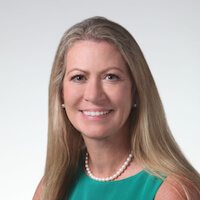What happens when migraine attacks don’t go away during menopause?
Description
If there is not a dramatic improvement in migraine attacks when a woman reaches menopause, Dr. Susan Hutchison says women can be treated with natural or bioidentical estrogen and progesterone. For women who cannot take hormones, there are additional options.
Transcript
“Sometimes early in menopause, there's not going to be a dramatic improvement. And I think what I have to sort out in menopause is, is this woman someone who's going to do better with a little bit of add-back estrogen? Dr. Vince Martin — who is one of my colleagues in the headache world — he found that in some women, there's an absolute level of estrogen, and if they get too low that can be a trigger. So, for my patients that have migraines that continue into menopause, then I'm usually looking at doing add-back estrogen, usually in the form of an estradiol patch. And if they still have an intact uterus, doing some type of natural progesterone. I try to go with what I call 'natural or bioidentical' and stay away from synthetic. But bioidentical doesn't mean it has be at a compounding pharmacy. There's a lot of pharmaceutical companies that make what are called estradiol patches. The reason I like the patch is it's like a small Band-aid, the woman would put it on her lower abdomen. It goes through the skin into the blood system. And if she changes it as directed, you get a nice even level of estrogen. That can make a huge difference in helping a woman who’s menopausal, but she's frustrated because her migraines didn't go away like she hoped they would.
“Then again, it's not all about hormones. I've said a lot about hormones, but there are women that can't take hormones for various reasons. And I just want to reassure those women there are other treatment options too, whether it be oral, there's botulinum toxin, also known as Botox. Again, there's the lifestyles, there's even some devices that have come out for migraines. So there's a number of options available for the woman [with migraine disease] who is frustrated because her migraines haven't gone away.”
Discussion
For women whose migraines don’t improve during menopause, there are treatment options. One option is to add back estrogen, either through a patch or with bioidentical hormones, in order to get a steady level of estrogen in the body. For women who can’t take hormones for various reasons, other options include Botox, devices, and lifestyle changes.
This is a short segment of a full video interview. View the full version by upgrading to an Access Pass bundle! Get FREE access to 8 expert interviews from Day 1 and Day 2 when you register today!

Susan Hutchinson, MD
Author - The Women's Guide to Managing Migraine
Orange County Migraine & Headache Center
Dr. Susan Hutchinson is a headache specialist and board-certified family practice physician. In February 2007, she founded Orange County Migraine & Headache Center, dedicated to serving patients with headache and mood disorders. Although she is not a psychiatrist, she has developed a special interest in treating mood disorders as well as headache. The mood disorders she treats include depression; anxiety; bipolar disorder; ADHD; and panic attacks. Dr. Hutchinson suffers from migraine headaches which gives her an empathy with her patients.
She felt such a calling to help patients with headache and mood disorders that she decided to specialize and devote her career to alleviating the suffering caused by both headaches and mood disorders. She lectures nationally on the subject of headache; has written dozens of articles for medical journals; participated in headache research projects and is very active in numerous professional organizations such as the American Headache Society and the National Headache Foundation.
She is the immediate post-chair of the Women’s Issues section of the American Headache Society after serving in the chair position for 5 years. Dr. Hutchinson is a dynamic and sought-after speaker. She speaks for community groups as well as professional groups. In 2010 she became the President of The Orange County Chapter of the California Academy of Family Physicians.


